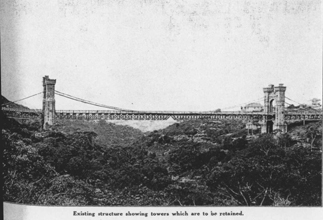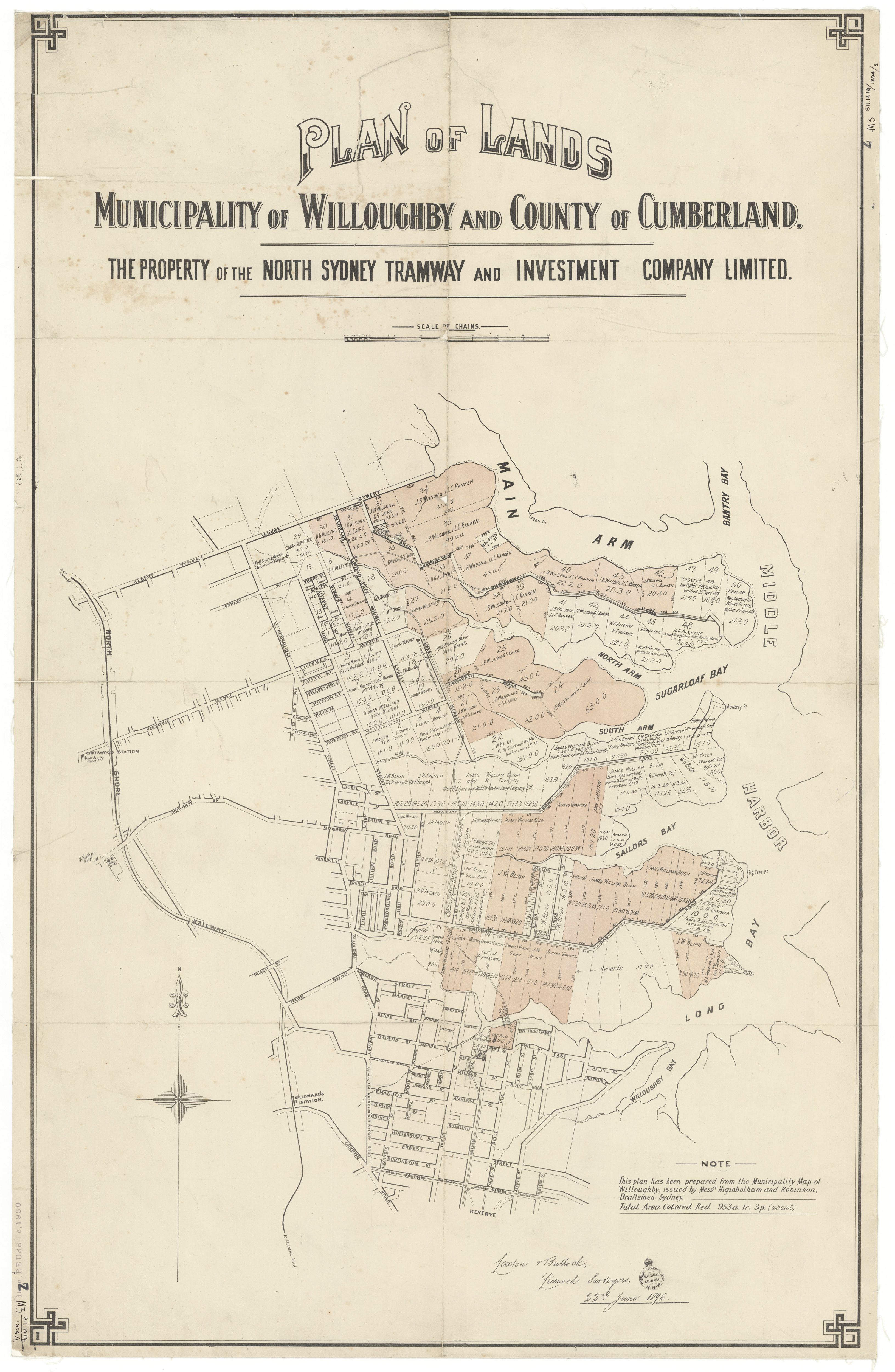
The building of the Long Gully bridge or the Cammeray Suspension bridge is a spectacular example of the opportunism and entrepreneurialism in the colony of NSW in the years leading up to federation.
Background
The Cammeray, or Long Gully bridge which, at one stage was considered the largest of its type in Australia at the time and the fourth largest in the world.
It is now a landmark that many Sydney residents will be familiar with, and as a child, I commuted to school over it without ever understanding the family connection although I did ponder the coincidence that one of the streets running parallel to the gully that it spans was called Cliff Ave.
Over the years, various stories have been told down the line about the Bridge and our connection with it however the stories are not consistent and there are gaps.
With this now distant but personal connection and out of interest, I’ve started collecting information about the bridge and its history and decided that as a first venture into using WordPress, I would try and pull the pieces together into a cohesive narrative.
The 1880’s Property Boom
Construction of the Long Gully Suspension Bridge was motivated by a property boom which took place in the 1880’s. According to the RBA, this property boom …
… was financed by rapid expansion in bank lending. In addition, many building societies and property finance companies, known as ‘land banks’, sprang up during the 1880s.
RDP 2001-07: A History of Last-Resort Lending and Other Support for Troubled Financial Institutions in Australia
The North Sydney Investment & Tramway Development (NSI&T) Company
Finance for construction of the Bridge was to be funded through an investment company initially called the North Sydney Investment & Tramway Company that was formed in 1887 by Andrew Armstrong, an interested landowner, and a James Alexander Brown to provide tramway access to the Middle Harbour peninsulas .
The NSI&T Co was fundamentally an investment vehicle that issued debentures which had a schedule of returns to investors. The apparent intention was that the returns to investors would be funded through sale of small blocks of land, then owned by the Company, on the northern side Long Gully.
This company, along with the North Shore and Middle Harbour Land Company acquired or already owned the land to the north of Flat Rock Creek.
Their plan was to open up the area for sales of residential land. The intention was to run a tram line across the bridge to open up access to large tracts of land to on the middle harbour peninsulas to the north of the Flat Rock Creek that the construction consortium owned.
The tramway was to run from the St Leonards Government tramway in Miller Street near Ridge Street, across the suspension bridge to what is now Castle Cove, and to extend this to a branch line into the Castlecrag Peninsula, terminating near the present 203 bus Terminus.

The 1890’s Depression
Unfortunately for the NST&I Company, the timing wasn’t good. While the land acquisition and planning had been done during the 1880’s period of optimism, the bridge was not completed until 1892, by which time the colony was in the midst of the 1890’s depression which the Reserve Bank of Australia describes as “the most severe in Australia’s history” and …
… saw real GDP fall 17 per cent over 1892 and 1893, and the accompanying financial crisis, which reached a peak in 1893, were
Op. cit
The history of the NST&I Co is a whole story in itself and eventually leads to significant financial losses for its major shareholders, one of whom was my great grandfather (J. W. Cliff) and that timeline is explored here
The Bridge is Built
In 1889, construction of the bridge commenced.
The designers, W.H. Warren and J.E.F. Coyle, chose an ornate suspension structure that was the largest of its type in Australia at the time and the fourth largest in the world.
The bridge was designed by New Zealand architect D.Ross. It took two years and nine months to complete and cost £42,000.
It comprised three spans for a total length of 1010 feet, with ironbark decking, steelwork imported from Clyde, Scotland and cables from Warwick in England, with stone delivered by punt up from Middle Harbour.
Early Years 1892-1912
In January 1892, the Suspension Bridge was opened with much acclaim, and became an instant tourist attraction featured on postcards and in glossy publications of the day.
Initially, the bridge operated as a footbridge only, with a toll charge of threepence return for adults and one penny for children.
The end of the North Sydney Tramway & Development Company
During the 1890s, the NST&D Company went into liquidation and a new company, the North Sydney Investment and Tramway (NSI&T) Co Ltd, was formed to take over the project.
In 1909, a tramway line was constructed to the bridge which assisted the development of the area which became known as Suspension Bridge (later Cammeray).
Out of Private Hands
Slow land sales in the 1890s meant that the planned tramway was not built by the consortium and following the collapse of NSI&T Company, the Bridge was handed over to the Government in 1912 as a gift on the condition that a tramway be extended to the north side and no toll charged.
In February 1914, the tracks extended over the bridge and opened to tram traffic.
No longer a Suspension Bridge
In 1935, the NSW Department of Main Roads discovered serious faults in the steelwork and cables and the bridge was closed to all vehicular traffic.
The original suspension structure was replaced by a reinforced concrete arch and the new bridge reopened in September 1939, but no tram services were restored at this time.

End of Tram Services
In 1941, tram services to Cammeray restored however in 1948 the government cancelled tram services for buses with the last tram runs from Wynyard to Northbridge.
In 1988, the Suspension Bridge, Cammeray was honoured, along with 50 other historic bridges in NSW as part of the Bicentennial.
Some useful references
- North Sydney Heritage Leaflet 13
- Greenwoods Grapevine, NSTHS Old Lions, May/June 2009
Hi Conor. I’m not sure that I have a favourite bridge fact – I do like the background of the…
What a magnificent bridge. An engineering marvel! Did you know: The oldest datable bridge in the world still in use…
My grandfather built it as part of a private consortium, I am just starting on the page & there will…


My grandfather built it as part of a private consortium, I am just starting on the page & there will be a lot more content
What a magnificent bridge. An engineering marvel!
Did you know:
The oldest datable bridge in the world still in use is the slab-stone single-arch bridge over the river Meles in Izmir (formerly Smyrna), Turkey, which dates from c. 850 BC. Remnants of Mycenaean bridges dated c. 1600 BC exist in the neighbourhood of Mycenae, Greece over the River Havos.
What’s your favourite bridge fact?
Hi Conor. I’m not sure that I have a favourite bridge fact – I do like the background of the Sydney Harbour Bridge and its connection with the bridge in Newcastle England, but perhaps moreso how it was built as a symbol that the growing Australian Colony had ‘come of age’